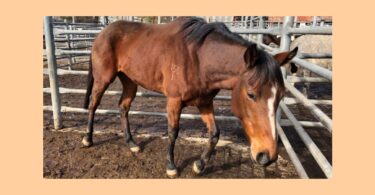Q: How can we recognize and treat anal gland impaction and infection?
Dr. Deva Khalsa:
The anal sacs are located on either side of your dog’s anal area. They routinely empty when your dog has a bowel movement. There are times when they can become obstructed or infected.
Signs and symptoms
Your dog starts scooting around and sliding on the floor.
A dog is licking under the tail more.
A pungent foul smell coming from the area of your dogs rectum
Under your dogs tail you find the anal area is red and inflamed.
Your dog seems uncomfortable having a bowel movement or stops having bowel movements.
There are small wet smelly spots where your dog lays.
Treatment
Check with your veterinarian or dog groomer to see if the anal glands need to be expressed.
Epson salt soaks – An absolute must when the anal glands are infected. Purchase from the pharmacy and prepare according to the directions on the container. Soak the anal area of your dog for five minutes, two to three times a day. Make sure the liquid is at a warm and comfortable temperature. The rare dog will be amenable to a sort of sitz bath. More commonly, your dog will require that you place these solutions on large cotton balls or cloths to help soak the area. This treatment will help the anal sacs to drain out. It is important that the solution be warm. Depending on how chronic or severe the problem has been, you can do this for 3 days or for as long as one week.
Homeopathic remedies
Myristica 30x- This homeopathic remedy is the very best, as a general remedy, for infections in the anal glands. Give one dose 4 times a day for one week. Follow this with one does twice a day for one more week.
Hepar sulph 30x – This is an excellent remedy for painful abscesses anywhere in the body. Often times dogs with anal abscesses are very uncomfortable and in pain. This remedy will help reduce the pain and inflammation and promote drainage of the area and handle the infection that is in it. Give this remedy 4times a day for three or four days.
Silicea 6c – This remedy should not be given at the same time as Hepar sulph. It should be given after the anal sacs are not inflamed anymore and the problem seems to be over. Give this remedy once a day for one to two weeks to complete the drainage.
Q: What can we do for pets that develop an itch from allergies?
Dr. Deva Khalsa: Here are ten tips to stop that itch:
Spring and summer brings along pollens and grasses that can cause your pets to suddenly start scratching and chewing a spot until it is raw and bleeding. Nipping this kind of thing in the bud with one of the tips below often saves a visit to the vet.
- Baking Soda can work wonders! Mix one teaspoon of baking soda with a little water to make a paste. Place the paste on the areas that are itchy and/or reddened. Leave the paste on for a few hours and wash off.
- Baking soda spray can also be prepared by mixing one tablespoon of baking soda with 8 ounces of water. Place in a spray bottle and use when necessary. Shake before using.
- Black tea or Japanese green tea prepared as a very strong brew. The resulting liquid is applied to the inflamed area for 3 to10 minutes to soothe it. The rest of the brew can be stored in refrigerator and used later.
- Calendula tincture can be applied directly or diluted 1:1 to the irritated areas.
- Witch Hazel is easily available in drugstores. A soaked cotton ball can be placed on itchy area a few times a day.
- Aloe Vera can be found in health food stores and pharmacies. The jelly from the fresh plant works the best. Place on the area one to three times a day. This plant has been used for centuries in many cultures for treating burns and healing wounds. The Aloe originated in tropical Africa, where it was used as an antidote for poison arrow wounds. Historically, it was used by the Greeks, Romans, Chinese, and in India. Each leaf contains a jellylike substance which works toward rapid regeneration of tissue on wounds and burns. This gel appears to increase the rate of healing in the cellular matrix and decreases inflammation. It also has antibiotic and coagulating agents in it. It is useful for treating fungal infections of the skin. Aloe can also stop the itch of insect bites and relieve them.
Aloe plants can be easily found in the nursery, and require little care to maintain in a home. Place a terra cotta pot with an Aloe Vera plant on your window ledge and watch it grow! The gel from the plant is much more effective than the jars of the gel that are available at stores. The active ingredients remain active after cutting off a leaf for less than three days. Fresh gel can be obtained by splitting the leaf. Apply the green tinged clear jelly-like substance inside of the split leaf to burns, wounds, fungal infections and insect bites. If you cut a leaf and use part of it, the remaining parts of the leaf needs to be stored in the refrigerator. Aloe gel can be used topically on itchy areas of your pet’s skin.
- Oatmeal poultices are easy to make. The powder, finely mixed with water is placed on the area for a short time. Aveena Colloidal Oatmeal, found in pharmacies, can be used as a tub bath or poultice.
- Preparation H cream is easily available in drugstores. It contains no harmful ingredients. This cream stops itching and burning. It can often prove helpful with itching skin.
- Cabbage leaf is an old-time remedy to remove heat and inflammation from an area. Pound one cabbage leaf until the surface is broken so that the juice oozes out. Hold this leaf on the inflamed area. The leaf will begin to get warm as it soaks the inflammation out. Remove the leaves after several minutes.
- There are enzyme products that work fast to stop itching and soothe areas. One company called Zymox makes a very effective spray.
Editor’s Note: Dr. Khalsa will be giving a free lecture in the U.S. :
“Holistic Health at its Best”
Sunday, June 1st, 2014 – 10am – 12 noon
Hampton Inn and Suites at 1000 Stony Hill Road, Yardley, Pennsylvania, 19067 (U.S.)
Important Note: You must call Lee at (727) 447-1776 to reserve your spot as there is limited seating.







I like the inclusion of Naturopathic ideas with the Homoeopathic, very helpful thank you!
Great reminder about aloe vera. Glad to finally find out that the plant is superior to the gels sold in the health food store.
Do you recommend a specific brand of myristica? There are so many options on Amazon, and as someone new to homeopathy, I want to make sure and get the right one.
I have an 8yr old lab she has been scooting alot ive read on the home remedies about glandex and wondered if anyone has used it or virgin coconut oil? Help!? Any advise would be greatly appreciated,thank you.
Dr. Deva, Can you please tell me where I can purchase a homeopathic kit for my dog that is already put together for those emergencies that may come up? I was hoping “Dogs Naturally” had something I could purchase from them that was already put together, but as far as I can tell, they don’t offer that….yet!? I honestly don’t know where to go to get the best! I’m looking to find the best Myristica 30X or Hepar Sulph 30X. My little Maxwell is in pain and nothing I’ve done for him has helped that much. I would be so grateful for your help! Thank you in advance! Joni
What is one dose equal to in each myristica (nux moschata) 30c, hepar sulf 30c and silicia 6c? How many pellets? Thank you